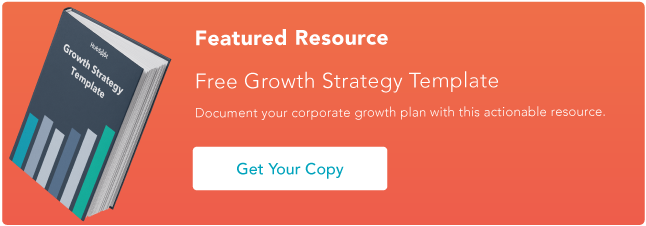What is an Enterprise Data Model?
Simply put, an enterprise data model is a visual representation, or graph, of an enterprise business' data. It focuses on high-level, more abstract components as it tries to define and standardize an entire enterprise business' data.
That means enterprise data modeling can be a massive task, but it will be important to help reduce duplicates, inaccuracies, and errors in a business' data.
Why Do You Need an Enterprise Data Model?
There are numerous reasons why you might need an enterprise data model. Let's dive into four, now.
1. Improve Data Quality
Even small companies handle a lot of data on a daily basis. Over time, this data can quickly become irrelevant. Errors can slip in unnoticed, as can redundancies. The more issues in the data, the less accurate it becomes. When companies revisit data to inform decisions, data riddled with errors and redundancies can impact company sales and growth. By taking an overarching, comprehensive look at the data and defining it via enterprise data modeling, these issues can be addressed appropriately.
2. Defining All Data
Enterprise data modeling is a massive task, but that's because it addresses all of an enterprise business' data. A company can clean up data and align applications, so everything is cohesive and running smoothly, with an enterprise data model.
3. Managing Data
Similarly, managing data is easier when it is all addressed and defined in one graph. The enterprise data model will be more high-level, so deeper dives and more intensive data modeling will be needed to define the specifics. But overall, a company can better manage all the data assets it has when they are all placed in one data model.
4. Data Governance
Businesses rely heavily on technology, as do consumers. The more we move online, the more regulations that need to be in place to maintain privacy and security. Businesses that do not protect consumer data will find themselves in hot water. An enterprise data model can help identify a business' data, better manage it, and ensure the business is complying with data and privacy laws.
Benefits of an Enterprise Data Model
The benefits of an enterprise data model are similar to the reasons a business needs it.
First, if a company wants to ensure high-quality data, it must remove redundancies and errors, and also apply any business-specific rules regarding the data. This can all be done through the extensive enterprise data modeling process.
An enterprise data model can also help a business be more cohesive and standardized in its processes by aligning the various applications and technologies the company uses daily.
Finally, a huge benefit to enterprise data modeling is its ability to help a business align its data with data governance. For example, GDPR, or General Data Protection Regulation, addresses how companies use customer data and gives more privacy and data control to the consumer.
When this regulation was implemented, companies needed to ensure that they were properly handling data. This regulation is still in effect, so newer businesses also must comply. Not complying with government data policies can lead to legal implications, which is what makes an enterprise data model so invaluable.
How to Create an Enterprise Data Model
The enterprise data model consists of a few smaller models. Starting with the enterprise subject area model, you'll move through each of the following steps to create the enterprise data model.
1. Enterprise Subject Area Model
The ESAM is a high-level model that defines the main subject areas of a business as well as the relationships among these subject areas. For example, this could include Accounts, IT, Billing, Finance, Sales.
2. Enterprise Conceptual Model
Next, each ESAM is broken down further into enterprise conceptual models, which consist of major business concepts and how these concepts are related.
3. Enterprise Entity Model
Finally, the enterprise entity model includes the main interests for each business concept and details their relationships with one another.
Enterprise Data Model Example
The enterprise data model can be visualized as a pyramid. The entire pyramid is the enterprise data model, which, let's say, is a retail store with a brick-and-mortar location and an online shop.
The top of the pyramid is the enterprise subject area model, with 10-20 business subjects defined. Those could include Stores, Staff, Warehouses, Products, Payments, and Customers, to name a few. Arrows would show how these subjects relate to one another.
Below that, the middle of the pyramid is a slightly more fleshed out enterprise conceptual model, which defines eight-15 main business concepts per subject area model. For example, Products could be broken down by ID and type, or Payments could be broken down by credit cards, debit cards, and cash.
Finally, the base of the pyramid is the enterprise entity model, which would identify the main areas of interest for each conceptual model.
Enterprise Data Model Tools
Now that you have a better understanding of enterprise data modeling, you might be ready to dive into this project. These data model tools will help make this process less taxing on your team.
1. Lucidchart
Teams can work together on Lucidchart to create collaborative diagrams and data models. It meets international privacy and security standards, making it a safe option.
Drag-and-drop components allow team members to build data models with ease, and each person can select portions of the diagram and leave feedback comments. You can test it out for free, and prices range depending on business size.
2. Erwin Data Modeler
The Erwin Data Modeler is specifically tailored to visualizing and standardizing enterprise data assets.
All data, whether from a data warehouse or in the cloud, can be handled in one interface, and automated models can help reduce redundancies and errors to improve data quality. Pricing varies by business needs, but you can explore this modeling tool with a free trial before committing.
3. Diagrams.net
Diagrams.net (formerly draw.io) is a free data modeling tool that allows you to make flowcharts and graphs for your enterprise data. Drag-and-drop features make it easy to place shapes, lines and arrows exactly where you'd like on the gridded, blank diagram.
You can also draw free-hand shapes. Newly added in February 21, diagrams.net also offers data governance options, and you can store all data models on your enterprise-level storage platforms, like Dropbox or Google Drive.
4. ER/Studio
Ideal for enterprise businesses, ER/Studio handles company data with ease. This enterprise data modeling software allows for forward or reverse engineering, source and target mapping, naming standards and more. You can model data from various sources and define and enforce standards within this tool. This is a paid tool, and prices vary depending on needs; you can also request a demo.
5. Ab Initio
Another popular tool for enterprise businesses, Ab Initio incorporates self-service and automation into your data models to improve efficiency. Users can model and catalog data securely, complying with data governance. The tool will even generate automated operational data quality rules for data processing. Licensing rates vary.
Improve Data Management With an Enterprise Data Model
Sure, enterprise data models can be intimidating. But they are more important than ever in our data-driven world. Enterprise data modeling can help standardize data assets for a business and better manage and secure these assets.
Most importantly, an enterprise data model can help a company avoid legal troubles by complying with data governance. By using one of many tools for data modeling, this arduous but crucial task can be made simpler and more collaborative.
.png?width=112&height=112&name=Image%20Hackathon%20%E2%80%93%20Vertical%20(56).png)










